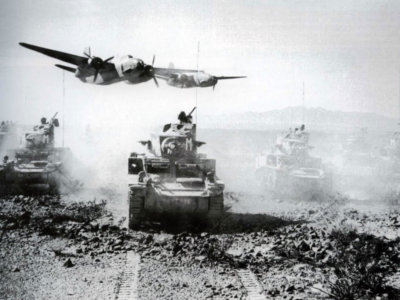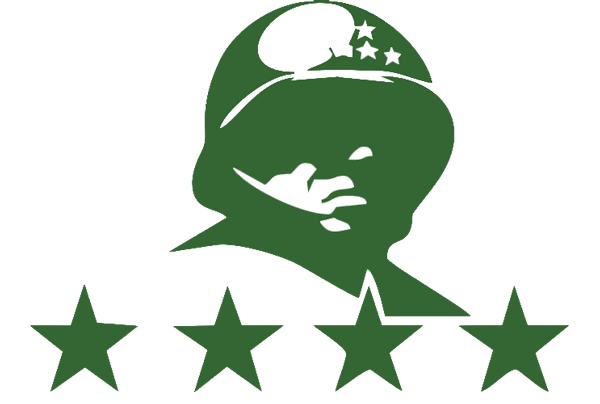
GENERAL PATTON AND THE DESERT TRAINING CENTER
“The Desert is a killer, and we must acclimate our soldiers to the climate.” -General George S. Patton Jr.
In February 1942, the U.S. Army assigned General George S. Patton Jr. to advance desert tank warfare and train U.S. soldiers for combat under the harshest desert conditions possible.
In early March General Patton and his staff surveyed the southwestern United States and established the boundary of the Desert Training Center. It encompassed 18,000 square miles of rugged, desolated and largely uninhabited lands within the Mojave and Colorado Deserts in California, Arizona and Southern Nevada.
Patton established the headquarters for his base camp near Shavers Summit (now Chiriaco Summit), 25 miles east of Indio. The Army named his headquarters Camp Young, after Lt. General S.B.M. Young, the Army’s first Chief of Staff. He identified sites for 12 divisional camps within the Desert Training Center: Camps Essex, Clipper, Coxcomb, Iron Mountain, Ibis, Granite, Rice Airfield and Pilot Knob in California; and Camps Bouse, Horn, Hyder and Laguna in Arizona. He established auxiliary camps, including hospitals, medical units and supply depots, and arranged communication logistics with local and regional telephone companies. Patton located the camps near major roads such as Route 66 and railroad communities to transport troops, equipment and supplies. He also coordinated with the Union Pacific Railroad in the North, the Santa Fe Railroad in the center and the Santa Fe and Southern Pacific Railroads in the South to build additional spurs and lines to facilitate shipment of troops and supplies.

Where possible, Patton located camps near the Metropolitan Water District aqueduct to provide his troops water. For camps Ibis and Essex located away from the aqueduct, the Army built 500,000 gallon reservoirs. Other water sources included the Colorado River, private wells and municipal water sources.
Patton established five major airfields where America’s young pilots would learn to fly. Landing strips also were built near each camp to bring in supplies.
Conditions were primitive- no barracks or running water. Winter temperatures could vary from 100 degree F at noon to below freezing at night. Summer temperatures could reach 130 degree F in the shade and could average 150-160 degree F inside the tanks. The perils of flash floods, sand storms, snakes and scorpions would further push soldiers to their limits of endurance.
General Patton
Patton served as the Desert Training Center’s first Commanding General, but his tenure was short. In July 1942, he was called to Washington to help plan Operation Torch, the invasion of North Africa. He then led U.S. troops in some of the most decisive Allied Victories in World War II.
 Information Provided by:
Information Provided by:
U.S. DEPARTMENT OF THE INTERIOR
BUREAU OF LAND MANAGEMENT
